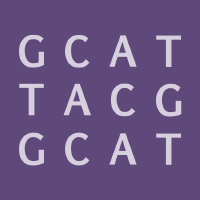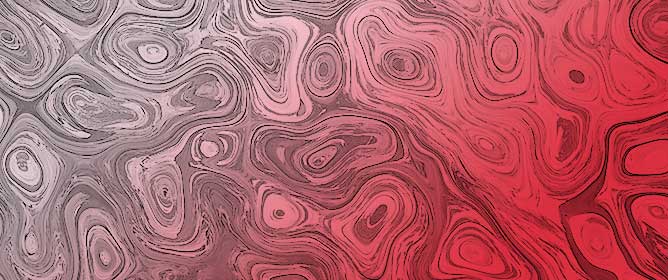<p>Logistic regression models of the risk of EDs (dependent variable: SCOFF score ≥ 2 points) in relation to night-time sleep duration (as a continuous variable) and the global sleep quality index (measured by the PSQI). The data are represented by dots (odds ratios) and lines (95% confidence intervals). (<b>a</b>) Crude and adjusted associations between the PSQI global score and ED risk; (<b>b</b>) crude and adjusted associations between night-time sleep duration and ED risk; (<b>c</b>) combined associations between sleep quality and night-time sleep duration in the regression model for ED groups. Note that night-time sleep duration lost statistical significance, whereas sleep quality remained significantly associated with the risk of EDs.</p> Full article ">
<p>Plasmid construction and recombinant protein expression. (<b>a</b>) Representative vector sequence of the packaging vector. (<b>b</b>) Envelope (E) and envelope ferritin (E-H) genes were cloned into the MCS of the shuttle vector. (<b>c</b>) Envelope and envelope ferritin proteins were detected using Myc antibody. (<b>d</b>) Envelope-ferritin protein was detected using a human ferritin heavy chain antibody.</p> Full article ">Figure 2
<p>Generation, purification, and titration of rAds. (<b>a</b>) Adenovirus-specific CPEs were observed in 293A cells after several days of transfection compared to the vector-only transfection control. (<b>b</b>) Isolated DNA from vector only (mock), rAd E and rAd E-H culture supernatants were amplified with gene-specific primers, and envelope and envelope ferritin-specific genes were detected. (<b>c</b>) Amplified rAds were purified using the ultracentrifugation method, and clear virus bands were obtained for both viruses. (<b>d</b>) To analyze the titer of rAds, a TCID50 assay was performed in 96 well plates. Ten-fold serial dilutions were used (10<sup>−4</sup> to 10<sup>−12</sup>).</p> Full article ">Figure 3
<p>Confirmation of transduction efficiency in A549 cells. rAds were transduced into A549 cells at different MOI, and their respective expression was analyzed using western blotting. (<b>a</b>) Expression of rAd E was detected with Myc antibody. (<b>b</b>) Expressed rAd E-H was detected with ferritin heavy chain antibody. The lower panels in both A and B indicate actin detection as a loading control.</p> Full article ">Figure 4
<p>Mouse immunization and IgG ELISA. (<b>a</b>) Mice were immunized with 8 × 10<sup>6</sup> PFU/mL of rAds through the intramuscular route and bled as mentioned intervals (1 week and 4 weeks) in figure followed by ELISA was performed using the serum isolated from the blood. (<b>b</b>) For the DENV2 specific ELISA, DENV2 virus was coated in the plate and specific IgG response was analyzed using the mice serum obtained at 1-week and 2-week intervals (<b>c</b>) Immune responses from the E-H group at both time points were compared. (<span class="html-italic">p</span> < 0.001 determined by a Student’s <span class="html-italic">t</span>-test and it was indicated as ***, <span class="html-italic">p</span> > 0.05 = ns).</p> Full article ">
<p>3D surface topography and selected roughness parameters of DC04 steel sheet.</p> Full article ">Figure 2
<p>(<b>a</b>) Diagram and (<b>b</b>) view of the testing device: 1, 2, 3—working rollers; 4—support roller; 5—body; 6—sample; 7—nut; 8—horizontal tension cell; 9—upper tension cell; 10, 11—load cells.</p> Full article ">Figure 3
<p>Scheme of force parameters for the test carried out with (<b>a</b>) fixed and (<b>b</b>) freely rotating rollers.</p> Full article ">Figure 4
<p>Model performance of the training and testing iterations.</p> Full article ">Figure 5
<p>SHAP value plot influence on COF.</p> Full article ">Figure 6
<p>Relative importance of input parameters on COF; (<b>a</b>) ordered bar chart and (<b>b</b>) pie chart with percentage.</p> Full article ">Figure 7
<p>Actual and predicted values; (<b>a</b>) training COF dataset and (<b>b</b>) testing COF dataset.</p> Full article ">Figure 8
<p>Actual and predicted values of training COF dataset with 0.1 adjusting.</p> Full article ">Figure 9
<p>Actual and predicted values of COF; (<b>a</b>) training dataset and (<b>b</b>) testing dataset.</p> Full article ">
<p>Case study scenario.</p> Full article ">Figure 2
<p>AHP method flowchart.</p> Full article ">Figure 3
<p>Constraints map.</p> Full article ">Figure 4
<p>Criteria maps: (<b>a</b>) wind speed (m/s); (<b>b</b>) PVOUT (kWh/kWp).</p> Full article ">Figure 5
<p>Map representing the proximity to the coastline.</p> Full article ">Figure 6
<p>Map representing the proximity to the fertilizer unit.</p> Full article ">Figure 7
<p>Map representing the proximity to roads.</p> Full article ">Figure 8
<p>Criteria maps: (<b>a</b>) elevation (m); (<b>b</b>) slope (%).</p> Full article ">Figure 9
<p>Land suitability map including the five sites selected for green ammonia production.</p> Full article ">Figure 10
<p>Average wind speed (m/s) and solar GHI potential for the selected sites.</p> Full article ">Figure 11
<p>PV and WT capacities ratio for sites under study.</p> Full article ">Figure 12
<p>Economic assessment results: (<b>a</b>) LCOH (USD/kg); (<b>b</b>) LCOA (USD/t).</p> Full article ">Figure 13
<p>Sensitivity analysis results: (<b>a</b>) technical sensitivity analysis; (<b>b</b>) financial sensitivity analysis.</p> Full article ">
<p>Radar plots of sensory evaluation of fresh cookies in different concentrations of CT.</p> Full article ">Figure 2
<p>Overall acceptability of organoleptic characteristics of fresh cookies in different concentrations of CT.</p> Full article ">Figure 3
<p>The appearance of cookies control, 2%, 4%, 6%, and 8% of CT flower.</p> Full article ">Figure 4
<p>Total phenolics content and antioxidative activity with CT.</p> Full article ">Figure 5
<p>Sensory profiling of control sample during 6 weeks of storage.</p> Full article ">Figure 6
<p>Sensory profiling of sample with 6% CT flower during 6 weeks of storage.</p> Full article ">
<p>Regulation of GlyR and GlyT expression and oxidative stress by FC and glycine in UV-exposed keratinocytes. (<b>A</b>) Schematic diagram of the treatment of UV-exposed keratinocytes with FC and glycine. (<b>B</b>) Protein expression of GlyR and GlyT in UV-exposed keratinocytes following FC and glycine treatment. (<b>C</b>) Protein expression of NOX1/2/4 in UV-exposed keratinocytes following FC and glycine treatment. (<b>D</b>) The increased level of GSH/GSSG ratio in UV-exposed keratinocytes following FC and glycine treatment. (<b>E</b>) The SOD activity in UV-exposed keratinocytes following FC and glycine treatment. (<b>F</b>) The increased level of 8-OHdG in UV-exposed keratinocytes following FC and glycine treatment. Data are presented as the mean ± SD of three independent experiments. ***, <span class="html-italic">p</span> < 0.001, first bar vs. second bar; <span>$</span><span>$</span>, <span class="html-italic">p</span> < 0.01, vs. second bar; #, <span class="html-italic">p</span> < 0.05, vs. third bar (Mann–Whitney U test). FC, fermented fish collagen; GlyR, glycine receptor; GlyT, glycine transporter; GSH, glutathione; GSSG, oxidized glutathione; NOX, nicotinamide adenine dinucleotide phosphate oxidase; PBS, phosphate-buffered saline; SD, standard deviation; SOD, superoxide dismutase; UV, ultraviolet; 8-OHdG, 8-hydroxy-2-deoxyguanosine.</p> Full article ">Figure 2
<p>Regulation of p38, PKC, MITF, TRP1, TRP2, and TYR activity by FC and glycine in melanocytes. (<b>A</b>) Schematic diagram demonstrating melanocytes affected by conditioned media obtained from cultures of keratinocyte with UV-induced pigmentation for the evaluation of FC and glycine. (<b>B</b>) Protein expression of GlyR and GlyT in melanocytes treated with CM from UV-exposed keratinocytes with or without FC and glycine treatments. (<b>C</b>,<b>D</b>) Quantitative assessment of Western blot data presented in (<b>B</b>). (<b>E</b>) Protein expression of pp38, p38, PKC, MITF, TRP1, and TRP2 in melanocytes treated with CM from UV-exposed keratinocytes with or without FC and glycine treatments. (<b>F</b>–<b>J</b>) Quantitative assessment of Western blot data presented in (<b>E</b>). (<b>K</b>) Tyrosinase activity in melanocytes treated with CM from UV-exposed keratinocytes with or without FC and glycine treatments. Data are presented as the mean ± SD of three independent experiments. ***, <span class="html-italic">p</span> < 0.001, first bar vs. second bar; <span>$</span><span>$</span>, <span class="html-italic">p</span> < 0.01, vs. second bar; #, <span class="html-italic">p</span> < 0.05; ##, <span class="html-italic">p</span> < 0.01, vs. third bar (Mann–Whitney U test). CM, conditioned media; FC, fermented fish collagen; GlyR, glycine receptor; GlyT, glycine transporter; MITF, microphthalmia-associated transcription factor; PBS, phosphate-buffered saline; PKC, protein kinase C; pp38, phosphorylated p38; SD, standard deviation; TRP1, tyrosinase-related protein-1; TRP2, tyrosinase-related protein-2; UV, ultraviolet.</p> Full article ">Figure 2 Cont.
<p>Regulation of p38, PKC, MITF, TRP1, TRP2, and TYR activity by FC and glycine in melanocytes. (<b>A</b>) Schematic diagram demonstrating melanocytes affected by conditioned media obtained from cultures of keratinocyte with UV-induced pigmentation for the evaluation of FC and glycine. (<b>B</b>) Protein expression of GlyR and GlyT in melanocytes treated with CM from UV-exposed keratinocytes with or without FC and glycine treatments. (<b>C</b>,<b>D</b>) Quantitative assessment of Western blot data presented in (<b>B</b>). (<b>E</b>) Protein expression of pp38, p38, PKC, MITF, TRP1, and TRP2 in melanocytes treated with CM from UV-exposed keratinocytes with or without FC and glycine treatments. (<b>F</b>–<b>J</b>) Quantitative assessment of Western blot data presented in (<b>E</b>). (<b>K</b>) Tyrosinase activity in melanocytes treated with CM from UV-exposed keratinocytes with or without FC and glycine treatments. Data are presented as the mean ± SD of three independent experiments. ***, <span class="html-italic">p</span> < 0.001, first bar vs. second bar; <span>$</span><span>$</span>, <span class="html-italic">p</span> < 0.01, vs. second bar; #, <span class="html-italic">p</span> < 0.05; ##, <span class="html-italic">p</span> < 0.01, vs. third bar (Mann–Whitney U test). CM, conditioned media; FC, fermented fish collagen; GlyR, glycine receptor; GlyT, glycine transporter; MITF, microphthalmia-associated transcription factor; PBS, phosphate-buffered saline; PKC, protein kinase C; pp38, phosphorylated p38; SD, standard deviation; TRP1, tyrosinase-related protein-1; TRP2, tyrosinase-related protein-2; UV, ultraviolet.</p> Full article ">Figure 3
<p>Regulation of GlyR and GlyT expression and oxidative stress by FC in UV-exposed animal skin. (<b>A</b>) Schematic diagram of the treatment of UV-exposed animal skin with FC. (<b>B</b>) Protein expression of GlyR and GlyT in UV-exposed animal skin following FC treatment was measured using Western blot. (<b>C</b>) Protein expression of NOXs in UV-exposed animal skin following FC treatment. (<b>D</b>) The increased level of GSH/GSSG ratio in UV-exposed animal skin following FC treatment. (<b>E</b>) The SOD activity in UV-exposed animal skin following FC treatment. (<b>F</b>) The increased level of 8-OHdG in UV-exposed animal skin following FC treatment. Data are presented as the mean ± SD of three independent experiments. ***, <span class="html-italic">p</span> < 0.001, first bar vs. second bar; <span>$</span><span>$</span>, <span class="html-italic">p</span> < 0.01, vs. second bar; ##, <span class="html-italic">p</span> < 0.01, vs. fourth bar (Mann–Whitney U test). FC, fermented fish collagen; GlyR, glycine receptor; GlyT, glycine transporter; GSH, glutathione; GSSG, oxidized glutathione; NOX, nicotinamide adenine dinucleotide phosphate oxidase; SD, standard deviation; SOD, superoxide dismutase; UV, ultraviolet; 8-OHdG, 8-hydroxy-2-deoxyguanosine.</p> Full article ">Figure 4
<p>Regulation of melanogenesis upon treatment with different concentrations of FC in UV-exposed animal skin. (<b>A</b>) Protein expression of pp38, p38, PKC, MITF, TRP1, and TRP2 in UV-exposed animal skin following FC treatment. (<b>B</b>) Tyrosinase activity in UV-exposed animal skin following FC treatment. (<b>C</b>,<b>E</b>) Melanin content was determined using Fontana–Masson staining in UV-exposed animal skin with or without FC treatments. Scale bar = 100 µm. The blue dotted boxes are magnified images of the Fontana–Masson image. (<b>D</b>,<b>F</b>) Skin lightness in UV-irradiated animal skin with or without FC treatments. Scale bar = 500 µm. Data are presented as the mean ± SD of three independent experiments. ***, <span class="html-italic">p</span> < 0.001, first bar vs. second bar; <span>$</span><span>$</span>, <span class="html-italic">p</span> < 0.01, vs. second bar; ##, <span class="html-italic">p</span> < 0.01, vs. fourth bar (Mann–Whitney U test). A.U., arbitrary unit; FC, fermented fish collagen; L*, lightness; MITF, microphthalmia-associated transcription factor; PKC, protein kinase C; pp38, phosphorylated p38; SD, standard deviation; TRP1, tyrosinase-related protein-1; TRP2, tyrosinase-related protein-2; UV, ultraviolet.</p> Full article ">
<p>Patent–keyword matrix constructed from patent documents.</p> Full article ">Figure 2
<p>Patent–keyword matrix for graphical causal modeling.</p> Full article ">Figure 3
<p>GCM result of the initial skeleton with α = 0.05.</p> Full article ">Figure 4
<p>GCM result based on the PC algorithm with α = 0.05.</p> Full article ">Figure 5
<p>GCM result of initial skeleton with α = 0.01.</p> Full article ">Figure 6
<p>GCM result based on PC algorithm with α = 0.01.</p> Full article ">Figure 7
<p>Technological relationship structure in digital therapeutics using GCM.</p> Full article ">
<p>Neuroprotective effects of samples prepared from <span class="html-italic">Gymnadenia conopsea</span> on ODG/R-induced PC12 cells (means ± SDs, <span class="html-italic">n</span> = 3). <sup>###</sup> <span class="html-italic">p</span> < 0.001 versus the control, * <span class="html-italic">p</span> < 0.05, ** <span class="html-italic">p</span> < 0.01, and *** <span class="html-italic">p</span> < 0.001 versus OGD/R.</p> Full article ">Figure 2
<p>Structures of compounds <b>1</b>–<b>17</b> isolated from <span class="html-italic">G. conopsea</span>.</p> Full article ">Figure 3
<p>Key HMBC and <sup>1</sup>H-<sup>1</sup>H COSY correlations of compounds <b>1</b>–<b>2</b>, <b>13</b>, and <b>17</b>.</p> Full article ">Figure 4
<p>Stereoscopic configuration of compound <b>17</b>. (<b>A</b>) Correlations between the calculated and experimental chemical shifts of 2<span class="html-italic">S</span>. (<b>B</b>) Correlations between the calculated and experimental chemical shifts of 2<span class="html-italic">R</span>. (<b>C</b>) DP4+ probabilities of possible isomers of <b>17</b>. (<b>D</b>) Experimental ECD spectrum of <b>17</b> (black line) and the calculated spectrum of <b>17</b> (red line).</p> Full article ">Figure 5
<p>Neuroprotective effects of the isolated compounds on ODG/R-induced PC12 cells (means ± SDs, <span class="html-italic">n</span> = 3). <sup>###</sup> <span class="html-italic">p</span> < 0.001 versus the control, * <span class="html-italic">p</span> < 0.05, ** <span class="html-italic">p</span> < 0.01, and *** <span class="html-italic">p</span> < 0.001 versus OGD/R. Positive control: edaravone (Eda).</p> Full article ">Figure 6
<p>Differentially expressed gene (DEG) analysis. (3 = compound <b>17</b>) (<b>A</b>) Box plot of log<sub>2</sub> (TPM) values for mRNA under different conditions. (<b>B</b>) PCA diagram of normalized mRNA expression values illuminating the general relationship between datasets. (<b>C</b>) Upregulated and downregulated genes in the mRNA database among the three groups. The green dots indicate downregulated genes, and the red dots indicate upregulated genes.</p> Full article ">Figure 7
<p>Global changes in gene expression for multiple time points. (3 = compound <b>17</b>) (<b>A</b>) Optimal number of clusters. (<b>B</b>) Line plot displaying the expression patterns of mRNAs and cluster centroids identified by the fuzzy c-means algorithm at different developmental time points. (<b>C</b>) Heatmap displaying six obtained clusters with dynamic gene expression patterns. (<b>D</b>) The clusters’ overall gene expression dynamics are displayed as area plots (visualized in relation to cluster centroids).</p> Full article ">Figure 8
<p>Identification of key genes. (3 = compound <b>17</b>) (<b>A</b>) Key genes identified via a Venn diagram. (<b>B</b>,<b>C</b>) GSEA enrichment analysis showing that DEGs are significantly enriched in the developmental growth pathway (<b>B</b>) and protein digestion and absorption (<b>C</b>).</p> Full article ">Figure 9
<p>Comparisons of the expression patterns of <span class="html-italic">Sytl3</span>, <span class="html-italic">Gsta5</span>, <span class="html-italic">Hmgcs1</span>, <span class="html-italic">Insig1</span>, <span class="html-italic">Egr1</span>, <span class="html-italic">Armcx5</span>, <span class="html-italic">Col27a1</span>, and <span class="html-italic">Banp</span> obtained via qPCR and those obtained via RNA-seq.</p> Full article ">
<p>Examples of failure pattern definition. Intra-GTV (<b>a</b>,<b>b</b>), in-CTV/out-GTV (<b>c</b>), and distant (<b>d</b>). Red line: gross tumor volume (prescribed dose: 60 Gy/30 fr), blue line: clinical target volume (prescribed dose: 50 Gy/30 fr), cyan line: recurrent lesion.</p> Full article ">Figure 2
<p>Receiver operating characteristic curve analyses outcomes. Area under curve: 71.8%; sensitivity: 71.8%; specificity: 70.3%; J-index: 0.421.</p> Full article ">
<p>Curves depicting recurrence-free survival and distant disease-free survival in clinically node-positive breast cancer patients who underwent neoadjuvant therapy and axillary surgery (sentinel lymph node biopsy versus axillary lymph node dissection). Footnotes: SLNB: Sentinel lymph node biopsy, ALND: Axillary lymph node dissection.</p> Full article ">Figure 2
<p>Overall survival and breast cancer-specific survival curves of clinically node-positive patients with breast cancer treated with neoadjuvant therapy and axillary surgery (sentinel lymph node biopsy versus axillary lymph node dissection). Footnotes: SLNB: Sentinel lymph node biopsy, ALND: Axillary lymph node dissection.</p> Full article ">Figure 3
<p>Comparison of recurrence-free survival and distant disease-free survival curves between ypN0 and ypN+ patients. Footnotes: ypN0: Complete pathologic axillary response, ypN+: Residual axillary disease.</p> Full article ">Figure 4
<p>Comparison of overall survival and breast cancer-specific survival curves between ypN0 and ypN+ patients. Footnotes: ypN0: Complete pathologic axillary response, ypN+: Residual axillary disease.</p> Full article ">
<p>Development of silicon-based technologies for the mass fabrication of the (Pt - Pt - Pt/Ag/AgCl) electrochemical microcell (ElecCell).</p> Full article ">Figure 2
<p>Integration of ElecCell silicon chips on printed circuit board.</p> Full article ">Figure 3
<p>Drop-casting deposition of a fluoropolysiloxane-based nitrate ion-sensitive layer on the platinum-based modified ultramicroelectrode array used as a working electrode.</p> Full article ">Figure 4
<p>Mechanistic scheme of the Pt/IETL/FPSX(TDDAN)/electrolyte NO<sub>3</sub><sup>−</sup>-sensitive structure.</p> Full article ">Figure 5
<p>Optical images of the different ion-to-electron transducing layers: (<b>a</b>) PEDOT:PSS, (<b>b</b>) PEDOT:DWCNTs, (<b>c</b>) PPy:DWCNTs.</p> Full article ">Figure 6
<p>SEM images of the different IETL layers (general view (<b>top</b>) and detail (<b>bottom</b>)): (<b>a</b>) PEDOT:PSS, (<b>b</b>) PEDOT:DWCNTs, (<b>c</b>) PPy:DWCNTs.</p> Full article ">Figure 7
<p>Evolution of the open-circuit potential of pNO<sub>3</sub>-ElecCell for different KNO<sub>3</sub> solutions: (<b>a</b>) without ion-to-electron transducers, (<b>b</b>) PEDOT:PSS, (<b>c</b>) PEDOT:DWCNTs, (<b>d</b>) PPy:DWCNTs.</p> Full article ">Figure 8
<p>Analytical responses of the different pNO<sub>3</sub>-ElecCell devices.</p> Full article ">Figure 9
<p>pNO<sub>3</sub>-ElecCell analytical response in the presence of various interfering ions: (<b>a</b>) Pt/PEDOT:DWCNT/FPSX(TDDAN) structure, (<b>b</b>) Pt/PPy:DWCNT/FPSX(TDDAN) structure.</p> Full article ">
<p>Sowing of CC seeds in conservation tillage conditions. (Photo: E. Wilczewski).</p> Full article ">Figure 2
<p>White mustard (<b>A</b>), oilseed radish (<b>B</b>), and tansy phacelia (<b>A</b>–<b>C</b>) as components of non-legume mixtures of plants grown as summer CC (Photo: M. Staniak).</p> Full article ">Figure 3
<p>Different varieties of oilseed radish as winter (<b>A</b>) or summer (<b>B</b>) CC (Photo: D. Jug and E. Wilczewski).</p> Full article ">Figure 4
<p>Field pea as CC in autumn (<b>A</b>), winter (<b>B</b>), and early spring (<b>C</b>) (Photo: E. Wilczewski).</p> Full article ">Figure 5
<p>White mustard as CC in autumn (<b>A</b>) and late winter (<b>B</b>) (Photo: E. Wilczewski).</p> Full article ">Figure 6
<p>Average impact of plants grown as cover crops on cereals (winter and spring wheat, spring barley, and corn) grain yield, depending on tillage system [<a href="#B21-agronomy-14-02104" class="html-bibr">21</a>,<a href="#B36-agronomy-14-02104" class="html-bibr">36</a>,<a href="#B48-agronomy-14-02104" class="html-bibr">48</a>,<a href="#B97-agronomy-14-02104" class="html-bibr">97</a>,<a href="#B209-agronomy-14-02104" class="html-bibr">209</a>,<a href="#B210-agronomy-14-02104" class="html-bibr">210</a>,<a href="#B211-agronomy-14-02104" class="html-bibr">211</a>,<a href="#B212-agronomy-14-02104" class="html-bibr">212</a>,<a href="#B213-agronomy-14-02104" class="html-bibr">213</a>,<a href="#B214-agronomy-14-02104" class="html-bibr">214</a>,<a href="#B215-agronomy-14-02104" class="html-bibr">215</a>,<a href="#B216-agronomy-14-02104" class="html-bibr">216</a>,<a href="#B217-agronomy-14-02104" class="html-bibr">217</a>,<a href="#B218-agronomy-14-02104" class="html-bibr">218</a>].</p> Full article ">
<p>(<b>Top</b>): An undirected unweighted graph <math display="inline"><semantics> <msub> <mi>G</mi> <mn>1</mn> </msub> </semantics></math>. (<b>Bottom</b>): matrix <math display="inline"><semantics> <msub> <mi>M</mi> <mn>1</mn> </msub> </semantics></math> representing <math display="inline"><semantics> <msub> <mi>G</mi> <mn>1</mn> </msub> </semantics></math> so that <math display="inline"><semantics> <mrow> <msub> <mi>M</mi> <mn>1</mn> </msub> <mrow> <mo>[</mo> <mi>i</mi> <mo>,</mo> <mi>j</mi> <mo>]</mo> </mrow> <mo>=</mo> <mn>1</mn> </mrow> </semantics></math>, <math display="inline"><semantics> <mrow> <mn>1</mn> <mo>≤</mo> <mi>i</mi> <mo>,</mo> <mi>j</mi> <mo>≤</mo> <mn>5</mn> </mrow> </semantics></math>, if and only if <math display="inline"><semantics> <msub> <mi>G</mi> <mn>1</mn> </msub> </semantics></math> has an edge between the nodes <span class="html-italic">i</span> and <span class="html-italic">j</span>; otherwise, <math display="inline"><semantics> <mrow> <msub> <mi>M</mi> <mn>1</mn> </msub> <mrow> <mo>[</mo> <mi>i</mi> <mo>,</mo> <mi>j</mi> <mo>]</mo> </mrow> <mo>=</mo> <mn>0</mn> </mrow> </semantics></math>.</p> Full article ">Figure 2
<p>(<b>Top</b>): Directed unweighted graph <math display="inline"><semantics> <msub> <mi>G</mi> <mn>2</mn> </msub> </semantics></math>. (<b>Bottom</b>): a matrix <math display="inline"><semantics> <msub> <mi>M</mi> <mn>2</mn> </msub> </semantics></math> representing <math display="inline"><semantics> <msub> <mi>G</mi> <mn>2</mn> </msub> </semantics></math> so that <math display="inline"><semantics> <mrow> <msub> <mi>M</mi> <mn>2</mn> </msub> <mrow> <mo>[</mo> <mi>i</mi> <mo>,</mo> <mi>j</mi> <mo>]</mo> </mrow> <mo>=</mo> <mn>1</mn> </mrow> </semantics></math>, <math display="inline"><semantics> <mrow> <mn>1</mn> <mo>≤</mo> <mi>i</mi> <mo>,</mo> <mi>j</mi> <mo>≤</mo> <mn>5</mn> </mrow> </semantics></math> if and only if <math display="inline"><semantics> <msub> <mi>G</mi> <mn>2</mn> </msub> </semantics></math> has a edge from the node <span class="html-italic">i</span> to the node <span class="html-italic">j</span>; otherwise, <math display="inline"><semantics> <mrow> <msub> <mi>M</mi> <mn>2</mn> </msub> <mrow> <mo>[</mo> <mi>i</mi> <mo>,</mo> <mi>j</mi> <mo>]</mo> </mrow> <mo>=</mo> <mn>0</mn> </mrow> </semantics></math>.</p> Full article ">Figure 3
<p>(<b>Top</b>): A binary tree <span class="html-italic">T</span>. (<b>Bottom</b>): A matrix representation <math display="inline"><semantics> <msub> <mi>M</mi> <mi>T</mi> </msub> </semantics></math> of <span class="html-italic">T</span>. <math display="inline"><semantics> <mrow> <msub> <mi>M</mi> <mi>T</mi> </msub> <mrow> <mo>[</mo> <mi>i</mi> <mo>,</mo> <mi>j</mi> <mo>]</mo> </mrow> <mo>=</mo> <mn>1</mn> </mrow> </semantics></math> if and only if <span class="html-italic">i</span> is the parent <span class="html-italic">j</span>; <math display="inline"><semantics> <mrow> <msub> <mi>M</mi> <mi>T</mi> </msub> <mrow> <mo>[</mo> <mi>i</mi> <mo>,</mo> <mi>j</mi> <mo>]</mo> </mrow> <mo>=</mo> <mo>−</mo> <mn>1</mn> </mrow> </semantics></math> if <span class="html-italic">i</span> is the left child of <span class="html-italic">j</span>; <math display="inline"><semantics> <mrow> <msub> <mi>M</mi> <mi>T</mi> </msub> <mrow> <mo>[</mo> <mi>i</mi> <mo>,</mo> <mi>j</mi> <mo>]</mo> </mrow> <mo>=</mo> <mo>−</mo> <mn>2</mn> </mrow> </semantics></math> if <span class="html-italic">i</span> is the right child of <span class="html-italic">j</span>; <math display="inline"><semantics> <mrow> <msub> <mi>M</mi> <mi>T</mi> </msub> <mrow> <mo>[</mo> <mi>i</mi> <mo>,</mo> <mi>j</mi> <mo>]</mo> </mrow> <mo>=</mo> <mn>0</mn> </mrow> </semantics></math> otherwise.</p> Full article ">
<p>Hypothetical research model.</p> Full article ">Figure 2
<p>Quantitative analysis flowchart.</p> Full article ">Figure 3
<p>Qualitative analysis flowchart.</p> Full article ">Figure 4
<p>Structural model coefficients. * <span class="html-italic">p</span> < 0.001; ** <span class="html-italic">p</span> < 0.05; N.S. not significant.</p> Full article ">Figure 5
<p>Annotated corpus map.</p> Full article ">Figure 6
<p>Word cloud after preprocessing.</p> Full article ">
<p>(<b>a</b>) Proposed DCCB design; (<b>b</b>) DC system circuit diagram.</p> Full article ">Figure 2
<p>A sample current and voltage waveform during breaking.</p> Full article ">Figure 3
<p>Current path during (<b>a</b>) Stage 2, (<b>b</b>) Stage 3, (<b>c</b>) Stage 4, (<b>d</b>) Stage 5.</p> Full article ">Figure 4
<p>Experimental setup and measurement system diagram.</p> Full article ">Figure 5
<p>Conventional Breaker.</p> Full article ">Figure 6
<p>(<b>a</b>) Conventional DCCB configuration, (<b>b</b>) fault current disruption under 260 V and 500 V tests.</p> Full article ">Figure 7
<p>The voltages and current during fault disruption using the original hybrid DCCB [<a href="#B11-applsci-14-08319" class="html-bibr">11</a>] under (<b>a</b>) 280 V and (<b>b</b>) 500 V supplies.</p> Full article ">Figure 8
<p>The voltages and current during fault disruption using the proposed hybrid DCCB with the surge arrester of <a href="#applsci-14-08319-f001" class="html-fig">Figure 1</a>b under initial (<b>a</b>) 280 V and (<b>b</b>) 500 V supplies.</p> Full article ">Figure 9
<p>V-I characteristics of the surge arrester [<a href="#B24-applsci-14-08319" class="html-bibr">24</a>].</p> Full article ">Figure 10
<p>Simulated voltages and currents during fault disruption using the proposed hybrid DCCB with surge arrester (<a href="#applsci-14-08319-f001" class="html-fig">Figure 1</a>b); (<b>a</b>) Voltages under 260 V supply, (<b>b</b>) Currents under 280 V supply; (<b>c</b>) Voltages under 500 V supply; (<b>d</b>) Currents under 500 V supply; Currents graphs are inverted for clarity.</p> Full article ">Figure 11
<p>Case 5: Distribution line.</p> Full article ">Figure 12
<p>Simulation results for the breaker at one-third of the line, with the fault at the end of the line: (<b>a</b>) Voltages (<b>b</b>) 421 currents.</p> Full article ">Figure 13
<p>Simulation results for breaker at two-thirds of the line, with the fault at the end of the line: (<b>a</b>) Voltages (<b>b</b>) currents.</p> Full article ">
Open Access Journals
-
 IJMS
IMPACT
IJMS
IMPACT
FACTOR
4.9 -
 Applied Sciences
IMPACT
Applied Sciences
IMPACT
FACTOR
2.5 -
 Sustainability
IMPACT
Sustainability
IMPACT
FACTOR
3.3 -
 Sensors
IMPACT
Sensors
IMPACT
FACTOR
3.4 -
 JCM
IMPACT
JCM
IMPACT
FACTOR
3.0 -
 Energies
IMPACT
Energies
IMPACT
FACTOR
3.0 -
 Materials
IMPACT
Materials
IMPACT
FACTOR
3.1 -
 Molecules
IMPACT
Molecules
IMPACT
FACTOR
4.2 -
 Electronics
IMPACT
Electronics
IMPACT
FACTOR
2.6 -
 Remote Sensing
IMPACT
Remote Sensing
IMPACT
FACTOR
4.2 -
 Nutrients
IMPACT
Nutrients
IMPACT
FACTOR
4.8 -
 Buildings
IMPACT
Buildings
IMPACT
FACTOR
3.1 -
 Foods
IMPACT
Foods
IMPACT
FACTOR
4.7 -
 Mathematics
IMPACT
Mathematics
IMPACT
FACTOR
2.3 -
 Plants
IMPACT
Plants
IMPACT
FACTOR
4.0 -
 Cancers
IMPACT
Cancers
IMPACT
FACTOR
4.5 -
 Polymers
IMPACT
Polymers
IMPACT
FACTOR
4.7 -
 Water
IMPACT
Water
IMPACT
FACTOR
3.0 -
 Animals
IMPACT
Animals
IMPACT
FACTOR
2.7 -
 Agronomy
IMPACT
Agronomy
IMPACT
FACTOR
3.3 -
 Diagnostics
IMPACT
Diagnostics
IMPACT
FACTOR
3.0 -
 Biomedicines
IMPACT
Biomedicines
IMPACT
FACTOR
3.9 -
 Processes
IMPACT
Processes
IMPACT
FACTOR
2.8 -
 Microorganisms
IMPACT
Microorganisms
IMPACT
FACTOR
4.1 -
 Land
IMPACT
Land
IMPACT
FACTOR
3.2 -
 Agriculture
IMPACT
Agriculture
IMPACT
FACTOR
3.3 -
 Healthcare
IMPACT
Healthcare
IMPACT
FACTOR
2.4 -
 Forests
IMPACT
Forests
IMPACT
FACTOR
2.4 -
 JMSE
IMPACT
JMSE
IMPACT
FACTOR
2.7 -
 Medicina
IMPACT
Medicina
IMPACT
FACTOR
2.4 -
 Cells
IMPACT
Cells
IMPACT
FACTOR
5.1 -
 Viruses
IMPACT
Viruses
IMPACT
FACTOR
3.8 -
 Biomolecules
IMPACT
Biomolecules
IMPACT
FACTOR
4.8 -
 Symmetry
IMPACT
Symmetry
IMPACT
FACTOR
2.2 -
 IJERPH
IJERPH
-
 Pharmaceuticals
IMPACT
Pharmaceuticals
IMPACT
FACTOR
4.3 -
 Genes
IMPACT
Genes
IMPACT
FACTOR
2.8 -
 Coatings
IMPACT
Coatings
IMPACT
FACTOR
2.9 -
 Pharmaceutics
IMPACT
Pharmaceutics
IMPACT
FACTOR
4.9 -
 Vaccines
IMPACT
Vaccines
IMPACT
FACTOR
5.2 -
 Antioxidants
IMPACT
Antioxidants
IMPACT
FACTOR
6.0 -
 Children
IMPACT
Children
IMPACT
FACTOR
2.0 -
 Nanomaterials
IMPACT
Nanomaterials
IMPACT
FACTOR
4.4 -
 Atmosphere
IMPACT
Atmosphere
IMPACT
FACTOR
2.5 -
 Life
IMPACT
Life
IMPACT
FACTOR
3.2 -
 Religions
IMPACT
Religions
IMPACT
FACTOR
0.7 -
 Education Sciences
IMPACT
Education Sciences
IMPACT
FACTOR
2.5 -
 Micromachines
IMPACT
Micromachines
IMPACT
FACTOR
3.0 -
 Horticulturae
IMPACT
Horticulturae
IMPACT
FACTOR
3.1 -
 JPM
IMPACT
JPM
IMPACT
FACTOR
3.0 -
 Brain Sciences
IMPACT
Brain Sciences
IMPACT
FACTOR
2.7 -
 Bioengineering
IMPACT
Bioengineering
IMPACT
FACTOR
3.8 -
 Metals
IMPACT
Metals
IMPACT
FACTOR
2.6 -
 Antibiotics
IMPACT
Antibiotics
IMPACT
FACTOR
4.3 -
 Behavioral Sciences
IMPACT
Behavioral Sciences
IMPACT
FACTOR
2.5 -
 Minerals
IMPACT
Minerals
IMPACT
FACTOR
2.2 -
 Biology
IMPACT
Biology
IMPACT
FACTOR
3.6 -
 Pathogens
IMPACT
Pathogens
IMPACT
FACTOR
3.3 -
 Photonics
IMPACT
Photonics
IMPACT
FACTOR
2.1





















